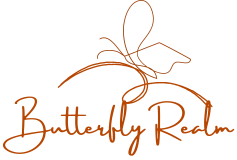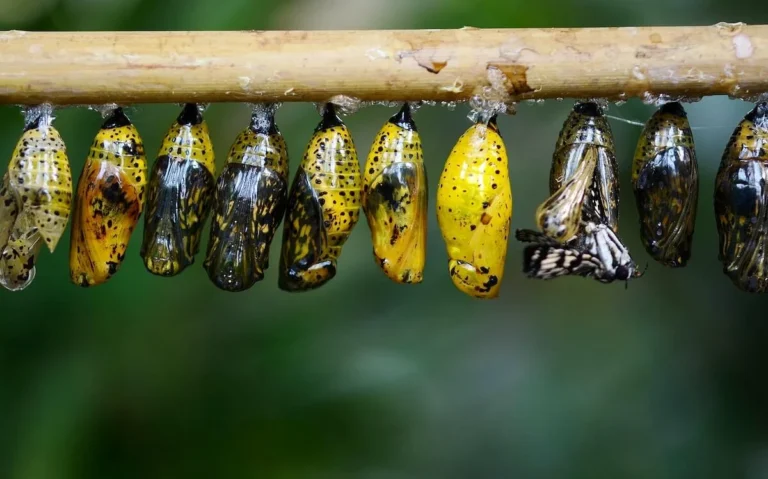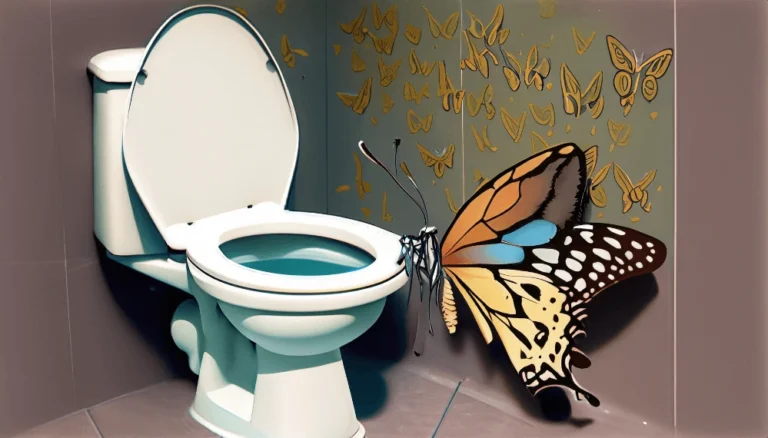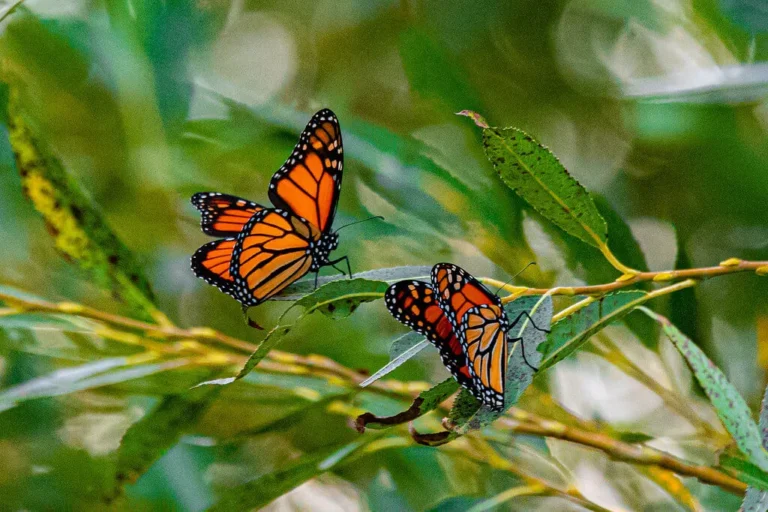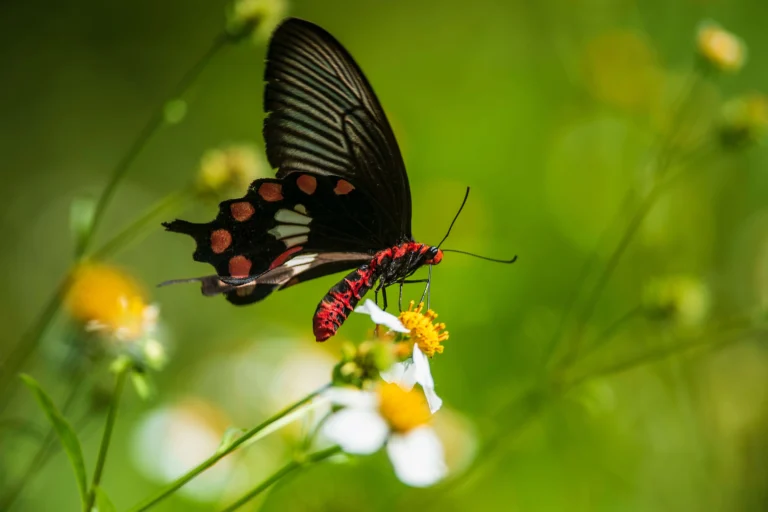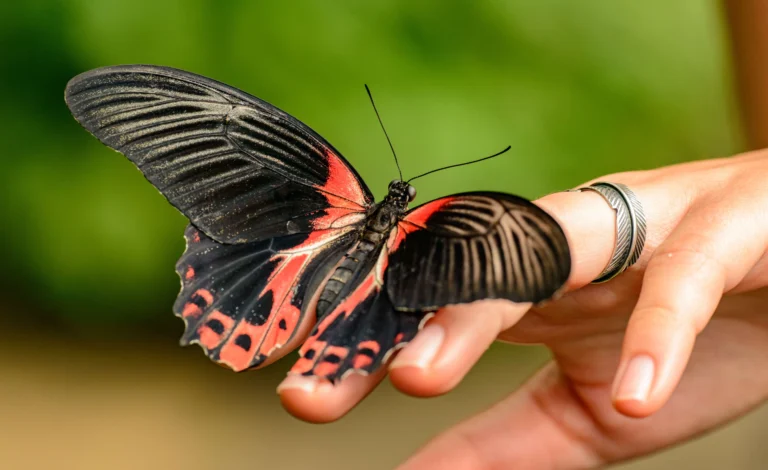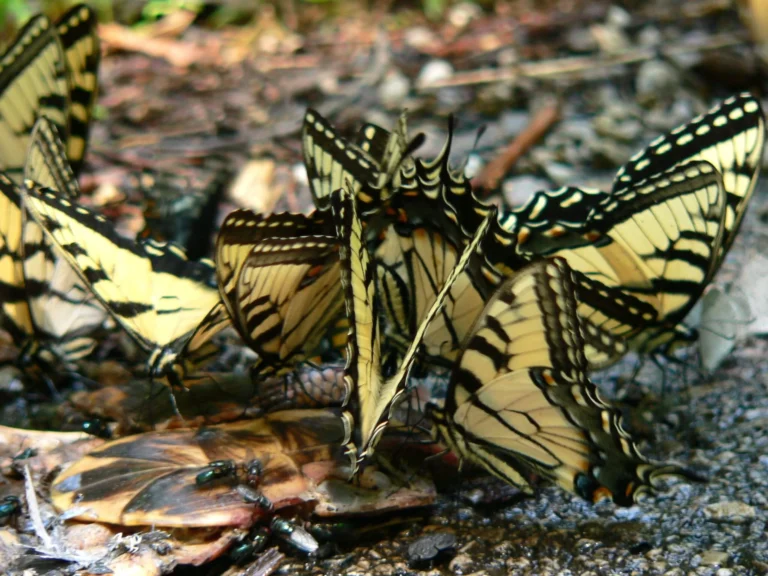Are Monarch Butterflies Poisonous? Complete Facts, Impacts, & Safety Guide
Yes, monarch butterflies are poisonous, but not harmful to humans unless eaten. They get their poison from feeding on milkweed plants as caterpillars. It protects them from predators. It’s safe to observe them, but best not to touch them to avoid skin irritation.
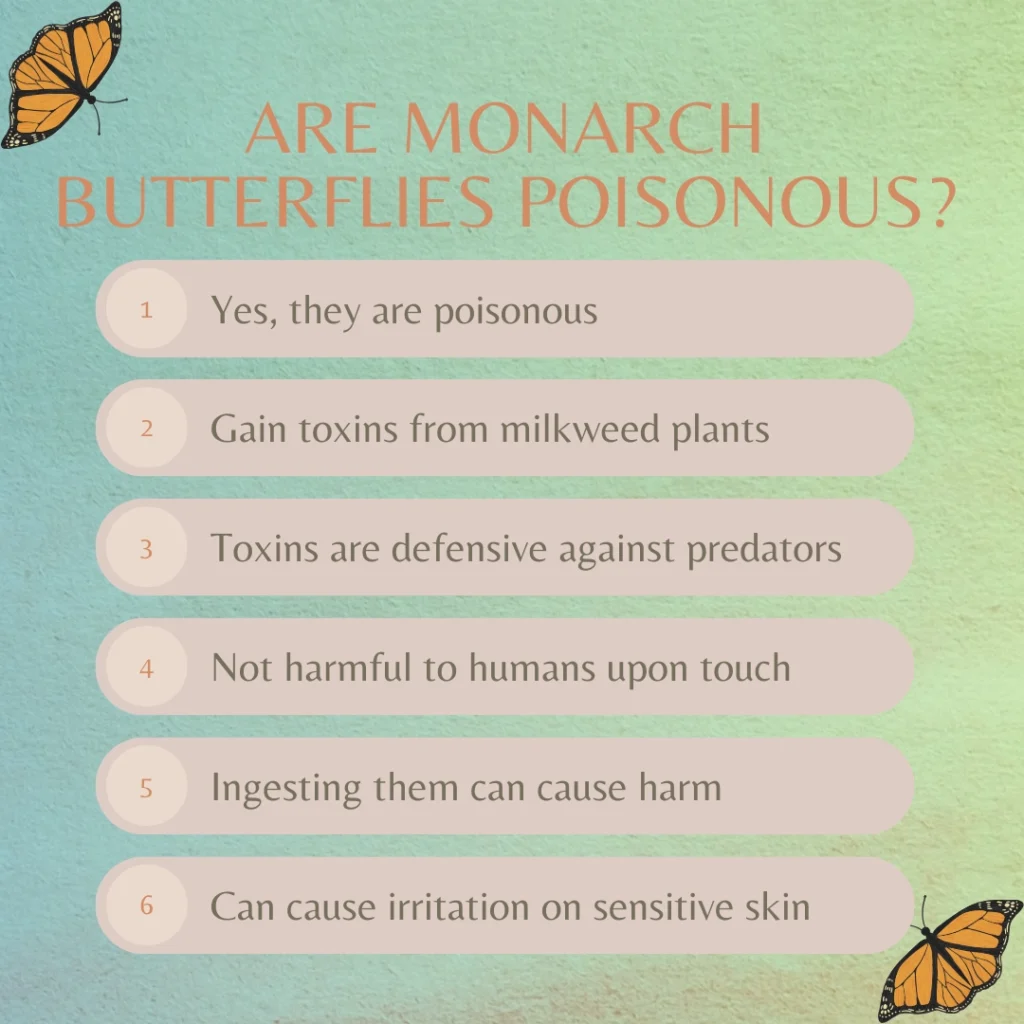
Table of Contents
Introduction
Everyone seems to be talking about monarch butterflies these days. Monarch butterflies have bright orange wings with black markings, which hint at their poisonous nature.
In this article, we will try to understand whether monarch butterflies are really poisonous and if yes, how and why.
You might be thinking, “Are monarch butterflies poisonous to humans?” or “Are they dangerous to our pets?”
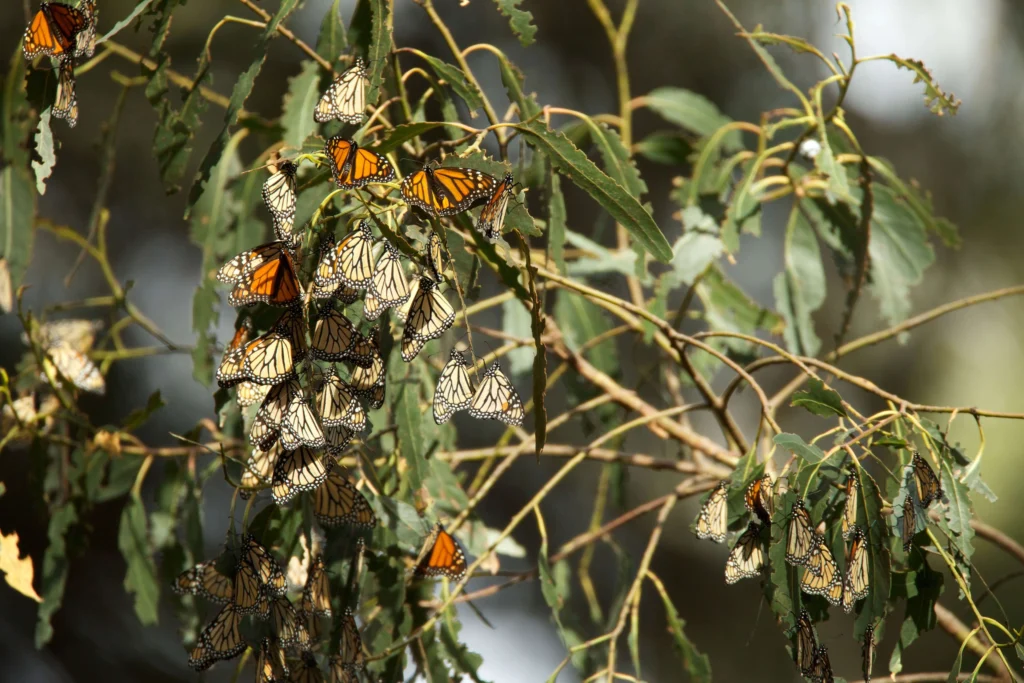
In this guide, we’ll see if milkweed makes monarchs poisonous, and how they affect humans and animals.
To understand more, you might enjoy our article on monarch butterfly meaning & symbolism.
Understanding the Poisonous Aspect of Monarch Butterflies
Monarch butterflies, with their striking appearance, have always intrigued many of us. But there’s more to these creatures than meets the eye.
Let’s dive into the fascinating yet straightforward details about their poisonous aspect.
During our discussion, we’ll also touch upon the yellow monarch butterfly and its relation to the commonly seen orange variety.

A Brief Look Into the Chemical Compounds That Cause Toxicity
Before we move further, it’s important to know what makes monarch butterflies poisonous. These butterflies carry a toxin called cardenolides.
They get special chemicals from milkweed plants, primarily as caterpillars.
It’s not something that they develop on their own, but something they accumulate from their diet. It’s not something that they develop on their own, but something they accumulate from their diet. To learn more about their diet, you can explore this article on what monarch butterflies eat.
The Evolutionary Perspective: Why Being Poisonous Gives an Advantage
Being poisonous can seem like a drawback at first, but in the animal kingdom, it’s quite the opposite. For monarch butterflies, it means protection.
Birds and other predators think twice before eating something that might be harmful to them.
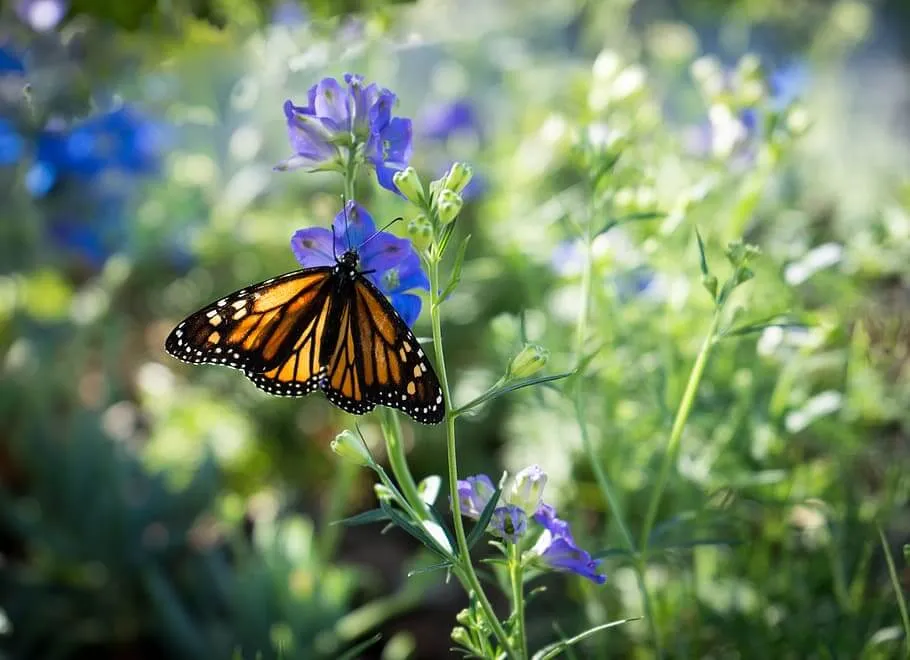
This defense helps monarch butterflies survive and continue gracing our gardens.
This way, the poisonous nature of monarch butterflies acts more like a shield, helping them live longer and safer lives.
It’s nature’s way of keeping the balance, where every creature has a fighting chance to thrive and flourish.
The Connection with Milkweed
Now, Let’s look into the crucial role milkweed plants have in making monarchs poisonous.
Milkweed as the Primary Source of Toxicity
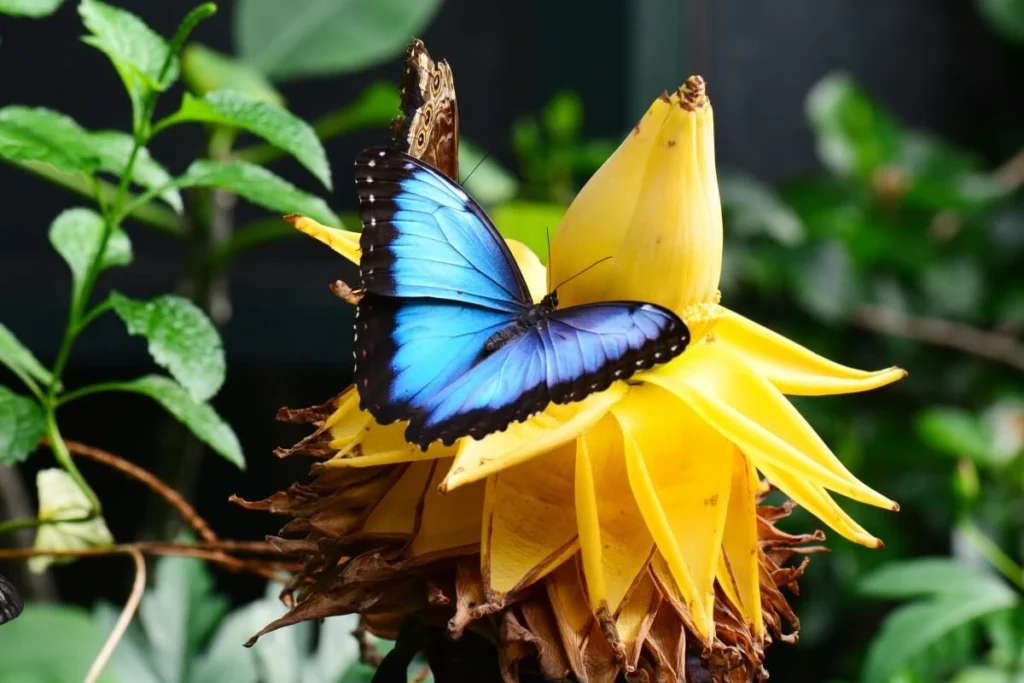
Milkweed plants are essential as they feed young monarch caterpillars.
But these plants carry cardenolides, the chemicals that are toxic to many animals but not to monarch butterflies.
The butterflies’ ability to eat these plants and store the toxins in their bodies is what makes them poisonous.
How Monarch Butterflies and Their Larvae Utilize Milkweed
The relationship between monarch butterflies and milkweed plants is a classic example of nature’s symbiosis.
As caterpillars eat milkweed leaves, they absorb its toxins, which remain even after they become butterflies.
This connection is not just about food; it’s a survival strategy. It’s nature’s way of ensuring that these vibrant creatures can flutter freely, without constantly being in danger from predators.
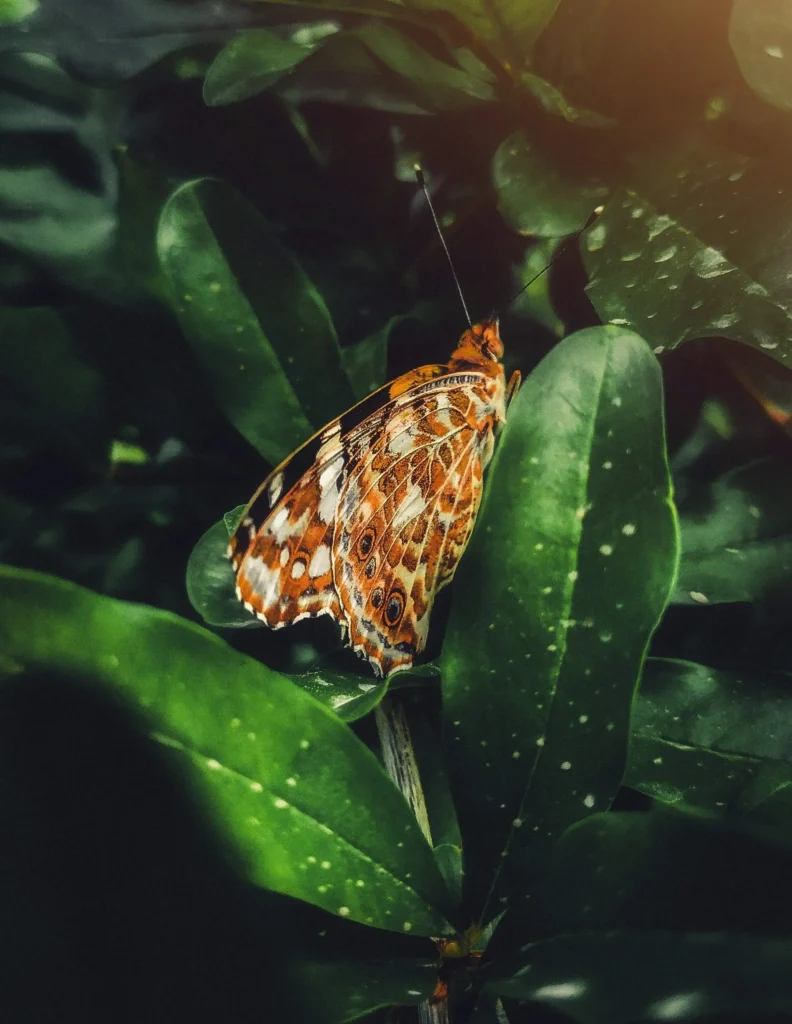
This brilliant strategy shows us how intricately connected every aspect of nature is.
Their self-defense ties in with their migratory patterns, explored in our article on monarch butterfly migration.
The Impact of Monarch Butterflies’ Poisonous Nature on Different Beings
In this part, we will talk about how the poisonous nature of monarch butterflies affects different beings including humans and animals. Let’s go step by step to understand this complex yet interesting topic.
Humans
Contact with Skin

You might wonder, Are monarch butterflies poisonous to touch? Well, generally speaking, touching monarch butterflies is not harmful to humans. Their poison is more of a defensive mechanism against predators.
It’s advisable not to touch them, especially if you have sensitive skin, to avoid irritation.
Ingestion: Theoretical Scenarios and Implications
Now, ingesting a monarch butterfly is indeed a very unusual scenario. To answer if monarch butterflies are poisonous to eat? Yes, due to cardenolides in them.
However, people are unlikely to eat them, and experts strongly advise against it for clear reasons.
Animals
Birds: Adverse Effects and Evolutionary Aspects

Birds often learn to avoid eating monarch butterflies as they can cause sickness. Birds have learned that eating these butterflies might upset their stomach, reducing their predation.
Pets: What Pet Owners Should Know
Dogs
As a dog owner, you might be concerned about your furry friend getting into trouble by eating a monarch butterfly.
While it’s not common for dogs to eat butterflies, if they do, it might cause mild stomach upset. Always keep a close eye on what your dog is up to during outdoor adventures.
Cats
Cats, with their curious nature, might chase butterflies around the garden. Similar to dogs, if cats ingest monarch butterflies, it can lead to a slightly upset stomach.
It’s best to monitor your pet’s activities to prevent any butterfly-chasing incidents.
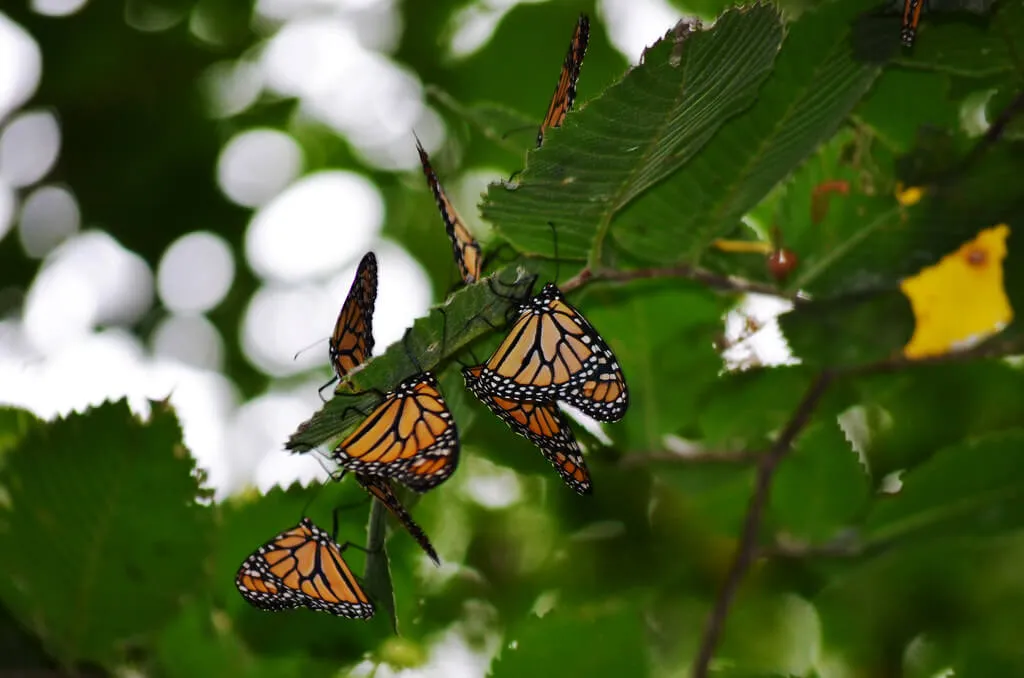
Small Mammals – Rabbits, Guinea Pigs, etc.
Small mammals like rabbits and guinea pigs are generally more interested in plants than chasing butterflies.
If one ingests a monarch butterfly, it may cause mild digestive problems because of the toxins they carry.
Birds as Pets – Parrots, Budgerigars, etc.
Pet birds like parrots and budgerigars are often curious and might peck at a butterfly if they see one. If they ingest monarch butterflies, similar to their wild counterparts, they might experience mild sickness.
It is advisable to prevent your pet birds from ingesting these butterflies to avoid any health issues.
Other Animals – Livestock and Wild Animals
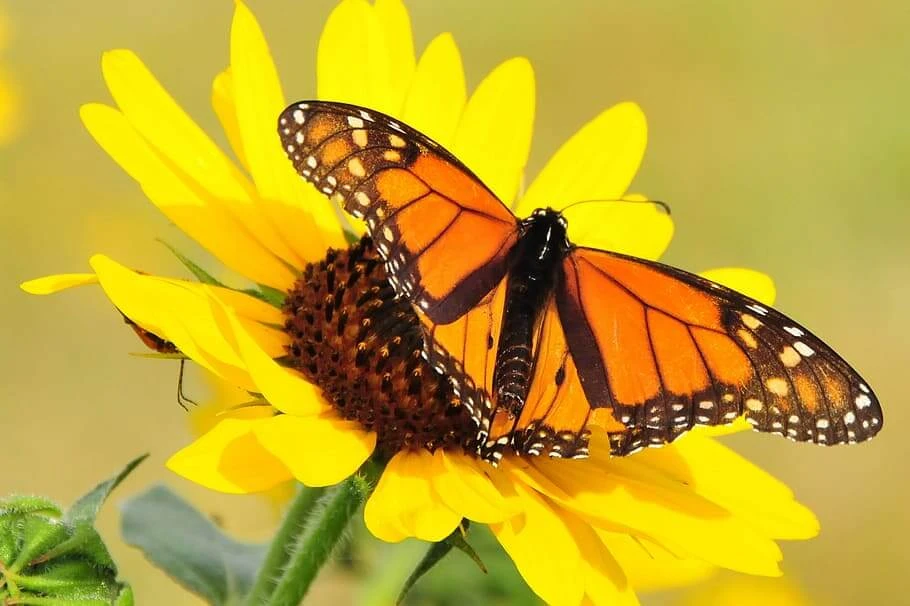
Livestock – Cows, Sheep, etc.
Livestock such as cows and sheep generally graze on grass and plants. If big animals eat monarch butterflies, their size and digestion might handle the toxins better than smaller animals, but we’re not sure.
Wild Animals – Squirrels, Raccoons, etc.
Wild animals like squirrels and raccoons might occasionally come across monarch butterflies in their natural habitat.
Animals rarely eat these butterflies, but if they do, they could face mild issues due to the toxins.
Real-life Instances and Scientific Studies
Monarch butterflies have intrigued scientists and nature enthusiasts for years. Let’s look into some real-life instances and scientific studies that throw light on their poisonous nature.
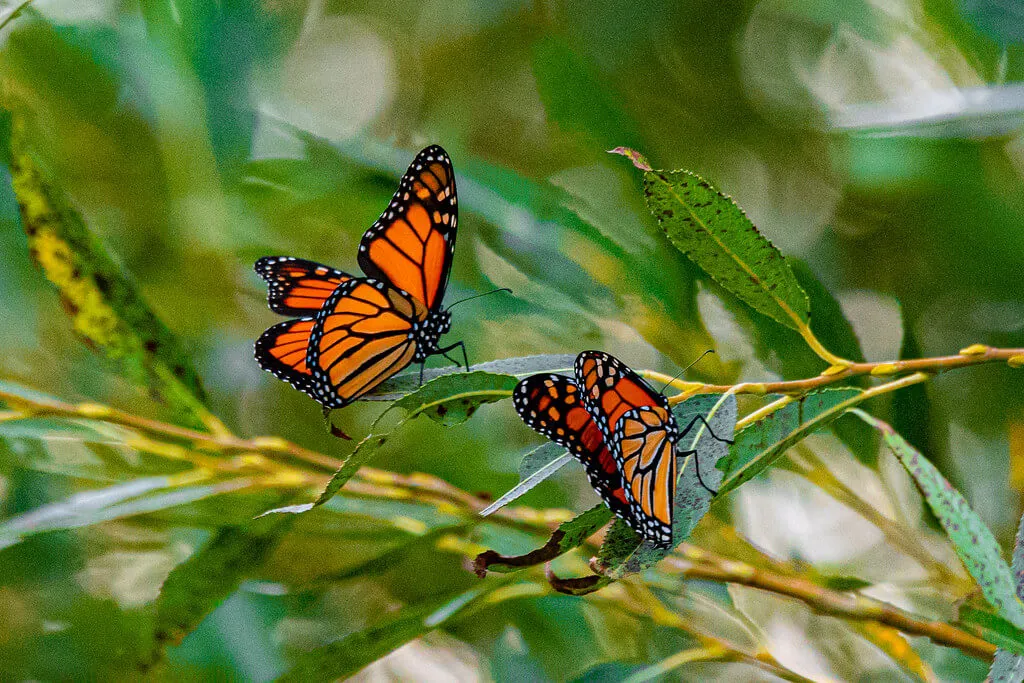
Anecdotes or Case Studies Involving Encounters with Monarch Butterflies
If big animals eat monarch butterflies, their size might help them handle the toxins, but it’s not well-known.
This shows the effectiveness of the butterflies’ defense mechanism, helping them survive in the wild. It’s a brilliant example of how nature equips its beings with tools to protect themselves.
Research and Findings that Elucidate Their Poisonous Nature
Scientific research has played a vital role in understanding the complex relationship between monarch butterflies and their predators.
Studies have shown that the cardenolides present in monarch butterflies, obtained from milkweed plants, act as a strong deterrent against predators. This toxin makes the butterflies less appetizing, thus protecting them from potential threats.
Research is uncovering more about this unique survival strategy, intriguing scientists and nature lovers.
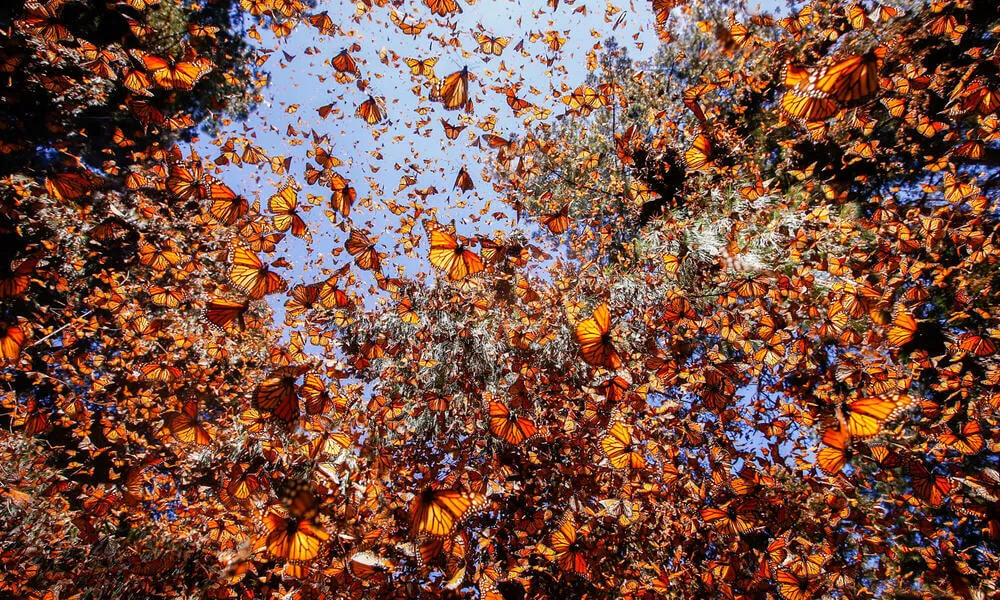
Tips for Safe Interaction with Monarch Butterflies
Interacting with nature’s wonders always brings joy and learning. However, when it comes to monarch butterflies, it’s essential to be cautious considering their poisonous nature.
Here are some simple tips to ensure a safe and respectful interaction:
Observe from a Distance
Avoid touching monarchs to prevent contact with toxins and to protect their fragile wings.
Wash Hands After Handling
In case you happen to handle them, make sure to wash your hands well to avoid skin irritation or toxin ingestion.
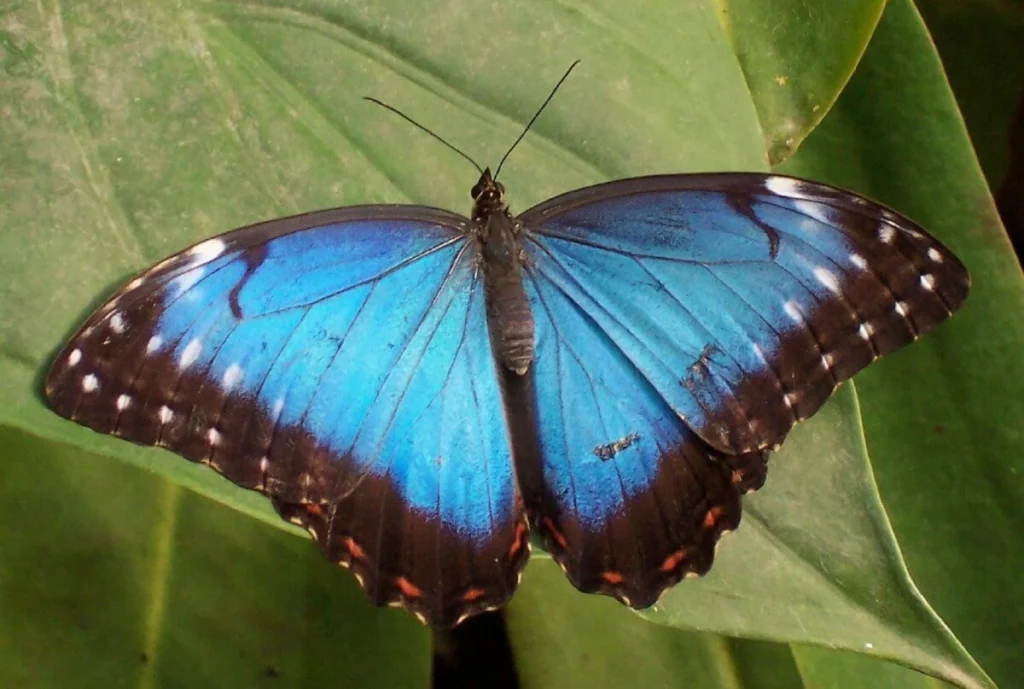
Educate Children
Teach children about the poisonous nature of monarch butterflies and encourage them to observe these creatures without touching or handling them. Education is a vital step in ensuring safe interaction.
Avoid Ingestion
While it sounds obvious, it’s worth mentioning that one should never eat monarch butterflies as they could harm your health.
Frequently Asked Questions
What makes monarch butterflies poisonous?
Caterpillars eat milkweed and keep its toxins when they become butterflies, making them poisonous to those who might eat them.
Are monarch butterflies poisonous to dogs and cats?
Yes, they can be poisonous to dogs and cats if ingested, potentially causing mild stomach upsets.
Can touching a monarch butterfly cause skin irritation?
It’s best not to touch monarch butterflies to avoid potential skin problems, especially for those with sensitive skin.
Conclusion
Monarch butterflies are not just pretty; they have a special way of keeping them safe. They eat a plant called milkweed which makes them a bit poisonous.
This helps them stay safe from enemies. They demonstrate that every element in nature has a role and connects to others.
We should be careful and help protect these butterflies and where they live.
